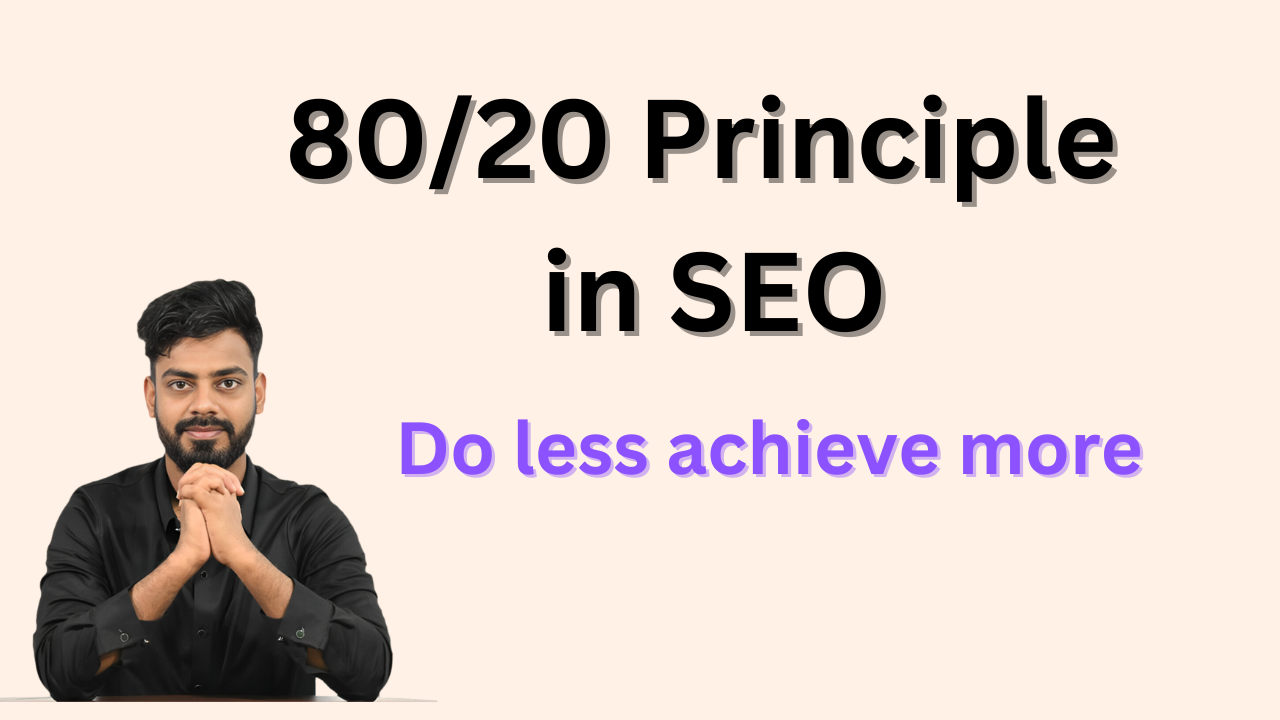What is the 80/20 rule in SEO?

The 80/20 rule, also known as the Pareto Principle, states that roughly 80% of the effects come from 20% of the causes. In the context of SEO (Search Engine Optimization), you can apply the 80/20 rule to focus your efforts on the most impactful strategies that yield the greatest results. Here’s how you can use the 80/20 rule in SEO:
How to Apply the Pareto Principle (80/20) to SEO?

1. Keyword Research:
Identify the top 20% of keywords that drive the majority of traffic to your website. Focus your content creation and optimization efforts around these high-impact keywords.
Suppose you run an e-commerce website selling outdoor gear. Through keyword research, you discover that “waterproof hiking boots” and “ultralight camping tents” are among the top 20% of keywords driving the majority of traffic to your site. You prioritize creating in-depth guides, product reviews, and landing pages targeting these specific keywords to capture high-intent organic traffic.
2. Content Optimization:
Analyze your existing content and identify the top-performing pages that contribute to 80% of your organic traffic. Optimize these pages further by improving their readability, relevance, and user experience.
After analyzing your website’s performance, you find that your guide on “Essential Camping Gear Checklist” and your product page for “Durable Backpacks for Hiking” are responsible for 80% of your organic traffic. You focus on optimizing these pages by adding more descriptive meta titles and descriptions, incorporating relevant keywords, and improving the overall user experience with high-quality images and clear CTAs.
3. Backlink Building:
Instead of trying to acquire backlinks from numerous low-quality websites, focus on building high-quality backlinks from authoritative sources. Identify the 20% of websites that have the most significant impact on your backlink profile and prioritize outreach efforts towards them.
Let’s say you identify that backlinks from reputable outdoor gear review websites and influential outdoor bloggers contribute significantly to your website’s authority and search rankings. You prioritize building relationships and earning backlinks from these top 20% of sources, rather than pursuing low-quality directories or irrelevant forums.
4. Technical SEO:
Prioritize the most critical technical SEO issues that affect your website’s performance. Fixing issues like site speed, mobile-friendliness, and crawlability can have a disproportionate impact on your search rankings compared to other technical optimizations.
You discover that your website’s loading speed is one of the main factors affecting user experience and search engine rankings. By optimizing image sizes, leveraging browser caching, and minimizing server response times, you significantly improve your site’s performance, leading to higher search visibility and better user engagement.
5. Content Creation:
Invest your time and resources in creating high-quality, evergreen content that has the potential to attract links, shares, and engagement. Focus on topics that align with your audience’s interests and pain points, rather than producing a large volume of content.
Recognizing that your audience is highly interested in “Beginner’s Guides to Backpacking” based on their engagement metrics, you invest resources in creating comprehensive and visually appealing guides covering various aspects of backpacking, such as gear selection, trail safety tips, and destination recommendations.
5. Monitoring and Analysis:
Use analytics tools to regularly monitor the performance of your SEO efforts. Identify the 20% of strategies that are generating the most significant results and double down on them, while also identifying the 20% of efforts that are producing minimal results and consider reallocating resources elsewhere.
Using Google Analytics, you find that your recent on-page optimization efforts have resulted in a noticeable increase in organic traffic and conversions for specific product categories. You allocate more resources to further optimize these pages while revising strategies for underperforming sections of your website.
6. User Experience Optimization:
Improve the user experience of your website by focusing on the 20% of elements that have the most significant impact on user satisfaction and engagement. This might include optimizing page load times, enhancing navigation, and improving mobile responsiveness.
By analyzing user behavior on your site, you discover that a significant portion of visitors accesses your website through mobile devices. You prioritize making your website mobile-friendly by implementing responsive design, improving touch accessibility, and streamlining checkout processes to enhance the overall user experience.
Conclusion:
By applying the 80/20 rule to your SEO strategy, you can prioritize your efforts on the most impactful activities that drive the majority of results, ultimately leading to better organic search performance and ROI.

I am an SEO specialist who has the potential to bring customers to you.
I have expertise in Technical SEO| On-page & Off-page SEO | Google My Business | SEO Consultant | Copy writer
